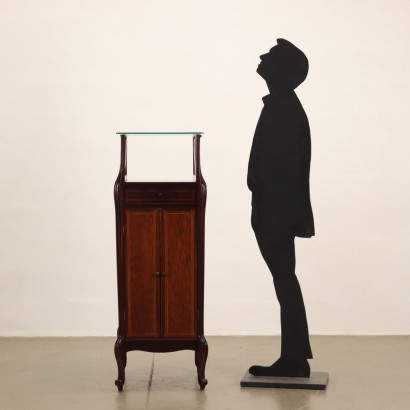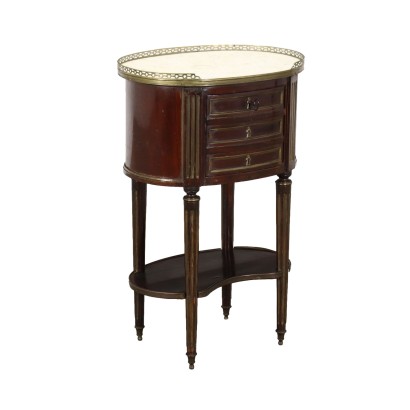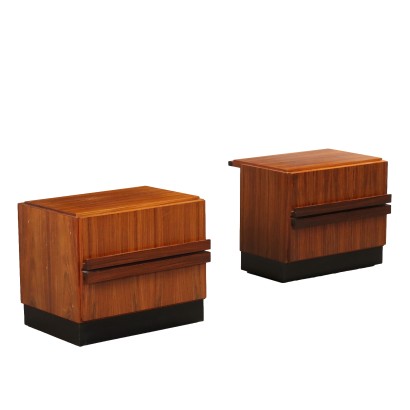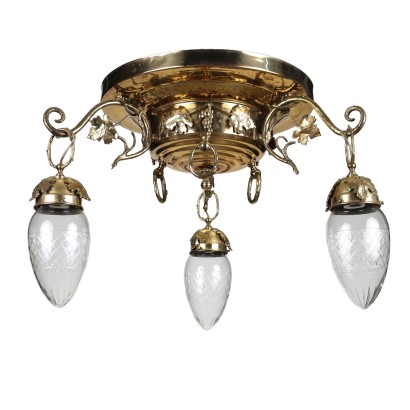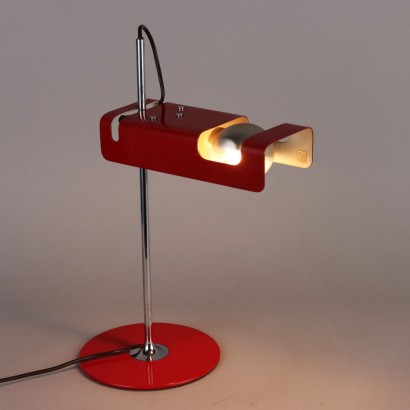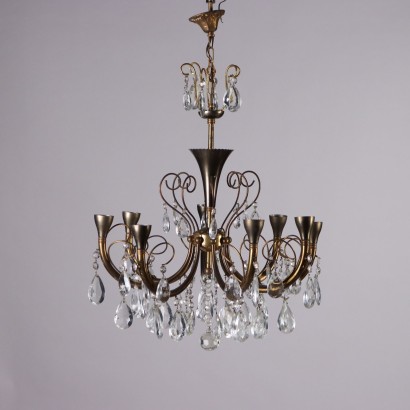Art Nouveau Cabinet Mahogany Italy XX Century - Italy Early 20th century
Features
Italy Early 20th century
Style: Art Nouveau (1890-1920)
Age: 20th Century / 1901 - 2000
Origin: Italy
Main essence: Cherry , Mahogany
Description
Liberty furniture finished in mahogany, Italy early 20th century. Equipped with drawer and pair of doors, 4 uprights ending with curved legs. Threaded maple and ebonized wood, inlaid with marquetterie. Interior in mahogany and cherry.
Product Condition:
Product that due to age and wear may require restoration and resumption of polishing.
Dimensions (cm):
Height: 130,5
Width: 45,5
Depth: 49,5
Additional Information
Style: Art Nouveau (1890-1920)
Historical stylistic period formed from the end of the 19th century (c. 1890) after the Umbertino style and continued until the First World War.The current was characterized by the floral influence and the soft and curved lines, a typical example are the "whiplashes".
The first signs of this new era came from architects such as Hector Guimard (1867-1942) who built numerous buildings and hotels, but also from people such as Arthur Mackmurdo furniture designer and Arthur Liberty late 19th century London industrial and merchant who began to produce upholstery fabrics with floral motifs with soft and sinuous shapes.
The 1900 Paris Universal Exposition was an important point for the development and affirmation of Liberty in the following decade.
Liberty was called in different ways according to the nation, universally known as Art-Nouveau and it is thought that Arthur Liberty derives the name given in Italy to this beautiful stylistic current.
The name Art-Nouveau, on the other hand, is thought to derive from a shop located in Paris called Maison de l'Art Nouveau which began to show off furniture items with a new and innovative design in its windows.
With the end of the First World War, the naturalistic period of Liberty ended and the Art-Decò style emerged with more rigid and geometric lines.
Find out more about the Liberty style with our insights:
Art Nouveau: birth and development of a style
Milan Liberty between flowers and colors
The Liberty of Carlo Zen
Decorative forms and elegance in a Liberty lounge
FineArt: Eoloe Cupido, Liberty sculpture by Luca Madrassi
FineArt: Nymph and Faun, Art Nouveau sculpture by Giuseppe Siccardi
Age: 20th Century / 1901 - 2000
20th Century / 1901 - 2000Main essence:
Cherry
Obtained from prunus cerasus , a plant of oriental origin, it is a hard wood with a light and delicate color, with a reddish vein. Due to its diffusion and availability it was used in Europe in popular furniture. In cabinet making, in the seventeenth century, it was widely used in France and England for inlay work. In Italy it was very successful in Lucca. It was also very popular in the United States for the manufacture, from the late 1600s, of commonly used furniture.The dictionary of antiques: Eclecticism
Classic Monday: a sofa from the 1800s example of eclecticism
Mahogany
It is one of the most precious and sought-after woods in cabinet making. It was discovered in Central America around 1600 and began to be imported to England in the 1700s. Much appreciated for its hardness and indestructibility, it became widespread following the blocking of walnut exports from France in 1720 and the consequent elimination of English import duties on mahogany from the colonies in America and India. The most valuable version comes from Cuba, but it became very expensive. At the end of the 18th century it began to be used also in France in Louis XVI, Directory and Empire furniture, its diffusion declined starting from when Napoleon, in 1810, forbade its import. It was generally used in the manufacture of elegant furniture, due to its characteristics and beautiful grain.Other customers have searched:
Comodino, mobile da camera, cassettiera..
Per approfondire:
Mobile portaoggetti, Inghilterra inizio XIX secolo
Uno stipo toscano a cavallo tra XVI e XVII secolo
Comò Luigi XVI attribuito a Giuseppe Viglione, Torino, fine XVIII secolo
Coppia di comò e comodino della bottega Maggiolini, 1804 ca.
Un mobile comune dalla forme inusuali
Conoscere lo stile impero
Sull'antiquariato in generale dai un'occhiata anche a
Classic Monday: da un pezzo dei nostri magazzini alla storia dell'antiquariato
L'antiquariato dalla A alla Z: il Dizionario dell'Antiquariato
Il dizionario dell'antiquariato - Lastronatura
Il dizionario dell'antiquariato - Mascherone
Il dizionario dell'antiquariato - Natura morta
Il dizionario dell'antiquariato - Opificio
Il dizionario dell'antiquariato - Pastiglia
Il dizionario dell'antiquariato - Savonarola
Il dizionario dell'antiquariato - Rosone
Alternative proposals
It could also interest you




